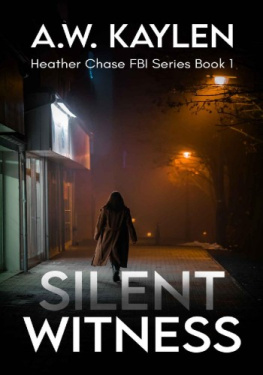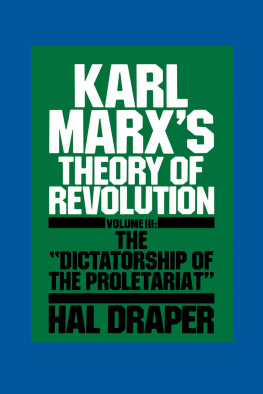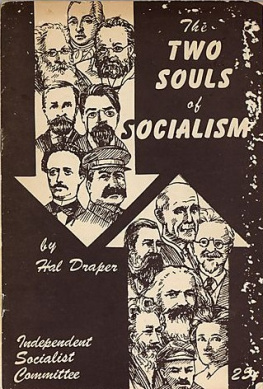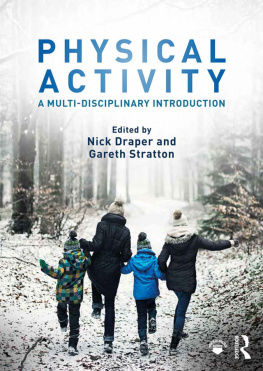The Witness
UNFOLDING THE ANATOMY OF A KILLER
2017 WANDA DRAPER, Ph.D.
All rights reserved. No portion of this book may be reproduced, stored in a retrieval system, or transmitted in any form or by any meanselectronic, mechanical, photocopy, recording, scanning, or otherexcept for brief quotations in critical reviews or articles, without the prior written permission of the publisher.
Published in New York, New York, by Morgan James Publishing. Morgan James and The Entrepreneurial Publisher are trademarks of Morgan James, LLC. www.MorganJamesPublishing.com
The Morgan James Speakers Group can bring authors to your live event. For more information or to book an event visit The Morgan James Speakers Group at www.TheMorganJamesSpeakersGroup.com.
Qualifier: This is a work of creative non-fiction based on true stories as the author remembers them. The names, characters, and the settings have been changed to protect the dignity and integrity of actual persons, living or dead.
| ISBN 978-1-63047-901-5 paperback ISBN 978-1-63047-902-2 eBook ISBN 978-1-63047-903-9 hardcover Library of Congress Control Number: 2015920149 Consulting Editor: Sarah Nicole Partin cover credit to Doug Pennington Cover Design by: Chris Treccani www.3dogdesign.net Interior Design by: Bonnie Bushman The Whole Caboodle Graphic Design |
In an effort to support local communities and raise awareness and funds, Morgan James Publishing donates a percentage of all book sales for the life of each book to Habitat for Humanity Peninsula and Greater Williamsburg.
| Get involved today, visit
www.MorganJamesBuilds.com | |
Foreword
All capital murder cases are decided based upon the emotional reaction of jurors to evidence presented to them. Jurors then search the evidence for facts, which support their emotional decision. In the battle for the hearts and minds of jurors, the prosecution begins with a distinct advantage: the prosecutor bats first. Jurors are subjected to horrible images of the deceased victim or victims and are taken on a visual tour of the often-gruesome crime scene. Autopsy photographs are displayed side by side with pictures of the victim alivethe grimness of death made more stark by the vivacity of life. The prosecutor then weaves the events of the homicide into a compelling narrative.
To counter the emotional story presented by the prosecution, the defense must present a counter narrative that will have a strong, poignant appeal of its own. The formula is easy to articulate but requires an enormous effort to bring to fruition. The defense looks for facts in the defendants background over which he had little or no control. These details sculpted his life, adversely impacting his development. The threads woven by childhood intertwine into a compelling story, hopefully entreating at least one juror to vote for life.
It is axiomatic that every human being, no matter what despicable crime he or she may have committed, has a human story. While some stories are more sympathetic and contain more mitigating circumstances than others, each is a complex entanglement of trauma, hurt, and broken connections. The defense team must ferret out the trail of frayed threads. Wanda Draper, PhD, describes the incredible amount of work required by the defense team to uncover the mitigating history. She illustrates the inner workings of the defense team. In the initial stages, brainstorming takes center stage. As each new fact about the defendant comes to light, all ideas for presenting the mitigating facts are explored. Team members are encouraged to express their ideas and opinions, no matter how fanciful or bizarre they might be. Each case is different because each defendant is different. It is the responsibility of the defense team to learn everything there is to know about a defendant.
As the trial date approaches, the human story is formed. The defendant is cast in a new, revealing light. The story changes as new facts are learned. Ultimately, the lead attorney has the responsibility for creating and presenting the mitigation case. Interesting facts that do not move the mitigation story forward are jettisoned. A delicate balance must be struck between the absolute imperative that expert witnesses remain scrupulously objective in their investigations and presentations of mitigating evidence and the lawyer-advocates goal of presenting the defendant in the best possible mitigation light. Capital trial lawyers and experienced expert witnesses understand the natural tension between these two viewpoints. There is rarely a problem.
Expert witnesses must be prepared for all of the prosecutions case, both in the guilt/innocence phase and the aggravation/mitigation phase. Prosecutors will routinely ask questions that begin with the phrase, Were you aware? They routinely end with the phrase, Would that have altered your opinion in any way? It cannot be emphasized enough that the facts upon which the mitigation story is based must be provable. If the jury believes that the defense is sacrificing the truth to present a good story, the entire defense against the death penalty collapses.
Wanda Draper is a master at ferreting out the facts of each defendants life story. She has never been satisfied with half-truths or partial explanations. The more sources of information, the better. As a human developmentalist, she is able to make sense of seemingly meaningless data contained in countless records. Ideally, each fact would be triangulated, that is, referred to by three different sources, each source coming at the fact from a different angle.
Expert witnesses for the defense come in a wide variety, covering many areas of expertise. Psychiatrists are in a position to analyze the facts and the results of psychological tests. They hold a medical license, which allows them to prescribe drugs that may help control the condition which led to the murder. Because they are trained as physicians, psychiatrists are often viewed as credible witnesses, particularly when they testify concerning organic brain damage. Psychologists and neuropsychologists rely heavily on testing. Psychological testing can provide valuable insights into the defendants mental condition at the time of the homicide. If a defendant who commits a homicide is suffering from paranoid schizophrenia or a bipolar disorder, he may not be insane, but his view of reality is severely distorteda major mitigating circumstance. Similarly, pharmacologists, sociologists, and other experts can provide valuable insights into the conditions which led up to a homicide.
















